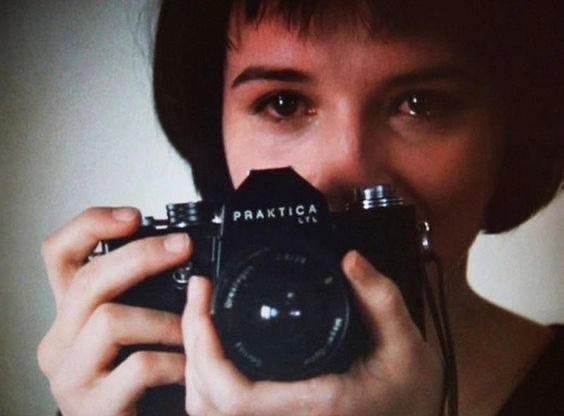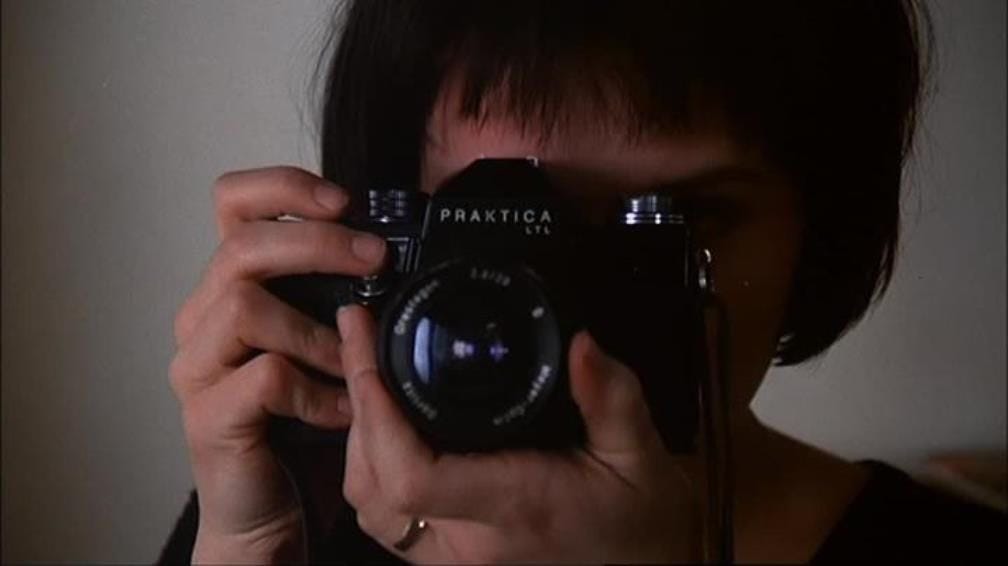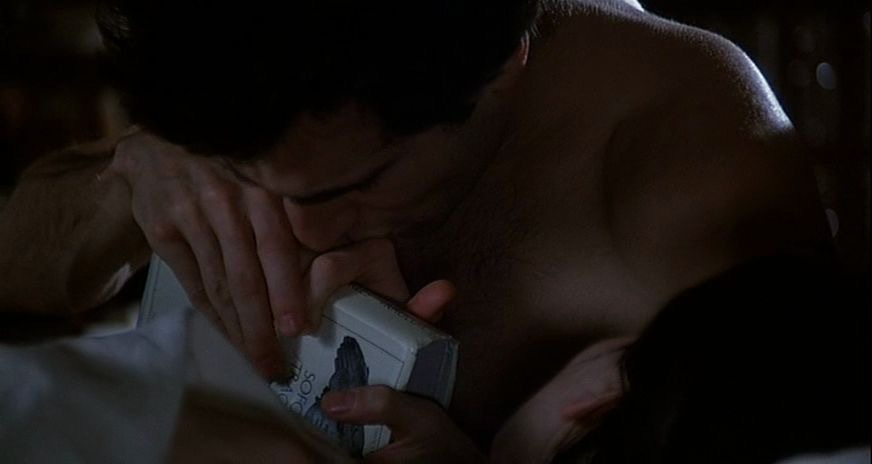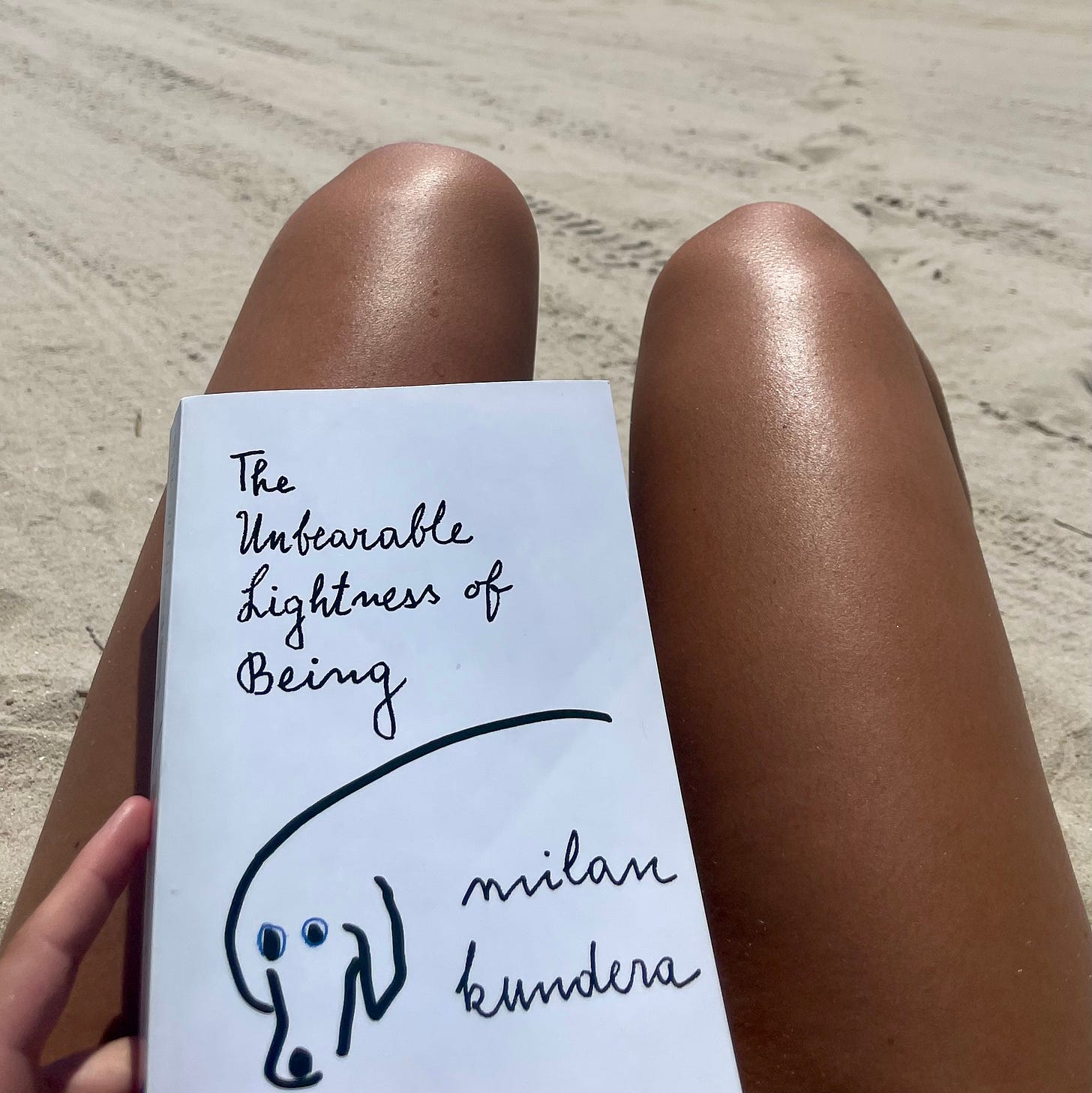On The Unbearable Lightness of Being For Real This Time
THIS ISN’T REALLY A REVIEW OR EVEN AN ANALYSIS BUT I SAW A MOVIE AND THIS IS WHAT I THOUGHT
On Saturday night, I watched Philip Kaufman’s 1988 film, The Unbearable Lightness of Being, which is based on the 1984 novel of the same title by Milan Kundera. It was being shown at Film Forum as a part of, “Tales from The New Yorker,” a series in honor of the magazine’s 100th year anniversary.
Happy birthday! I’m sorry if you missed the cake (two tangerines from my pocket I unraveled in the lobby after the showing).
The Unbearable Lightness of Being came from Czech into English translation in the form of a short story. The segment featured in the magazine consists of just the first few chapters of the full novel, a little bit chopped up, but if you don’t read the book at least read its fragment.
People may laugh when you tell them the title whose contents, cinematic and/or literary, you spent three hours crying over and then some. This totally isn’t from personal experience.
“You’re so predictable,” my coworker, Max, says, rolling his eyes, “but in a fun way.”
Not for nothing, but I could have kept my eyes closed and cried all the same just listening to the score.
“When the heart speaks, the mind finds it indecent to object. In the realm of kitsch, the dictatorship of the heart reigns supreme. The feeling induced by kitsch must be a kind the multitudes can share. Kitsch may not, therefore, depend on an unusual situation; it must derive from the basic images people have engraved in their memories: the ungrateful daughter, the neglected father, children running on the grass, the motherland betrayed, first love. Kitsch causes two tears to flow in quick succession. The first tear says: How nice to see children running on the grass! The second tear says: How nice to be moved, together with all mankind, by children running on the grass! It is the second tear that makes kitsch kitsch. The brotherhood of man on earth will be possible only on a base of kitsch.”
The last time I watched a film that moved me as viscerally was Wong Kar-Wai’s Fallen Angels. This says more about me than anything else. The films are only as similar insofar as they are love stories without a white-picket-fence-ending. When I watched the latter last summer, I sobbed while waiting for the train; and then on a bench outside a middle school playground while looking at the moon. I wrote about how living felt like licking a burnt circuit board with a teeth-marked tongue.
This morning, I went for a run in my sneakers that are still the color of cotton candy. Saturday night, I called my lover who is just my friend and cried, again. I’m being dramatic because it was.
My friend Gracey Mae, who I watched Fallen Angels with and who is the reason for my reading Kundera in the first place, says she likes art that’s sad the way that life is. I had never noticed how much I cried until she poked fun at me for it with love. You’re always crying.
“Tereza is just this girl who feels. . .everything. . .and Tomas is this. . .this scoundrel,” I try to say through tears into my headphones, pacing back and forth outside the theater.
“Don’t turn me into Tomas,” my lover-as-friend on the phone interrupts.
The conversation changes and we talk about how certain names bring less counts of racism against their owner and his not being one of them. If only he was “Tomas.” I don’t get much of my retelling out. I’m too busy sitting in what I just sat through. Emotions! They’ll kill me if I let them.
Kundera apparently didn’t like the film and at first neither did I.
BUT THIS ISN’T ABOUT ME THIS IS ABOUT THE AESTHETIC OF FORM AND WHAT THE PIECE IS DOING GOD DAMMIT!
Tomas, a neurosurgeon with a passion for casual sex, meets Tereza, a waitress with a passion for photography, in a town where he’s just operated. He sits with a book in his hand and orders a cognac by mouthing it comically in her direction. Beethoven’s playing. He’s staying in room 6 and what a coincidence that her shift ends at the same number.
It’s just so synchronous! And of course it is. Ess muss sein!
In the film, this affair began with a delivery of sardonic humor that, at first, felt disingenuous. Having related to Tereza’s character so much while reading it, I resented the naiveté introduced with her image. I decided my apprehensions were resonances—of course the young girl looks stupid and desperate to the older man who fucks for fun. Of course I felt weird about it. I was there.
I KNOW WHAT I SAID BUT I CAN’T HELP IT!
While the film begins with such lightness, the novel, however, is rich with philosophy and literature. The story is recounted by an unnamed narrator who travels between time and scene with no regard for typical chronology—an essayistic meditation that hops from perspective to perspective like tide pools on a shore with an unpredictable tide. It immediately dives in, devout.
This is why most people criticized the film, for the novel was untranslatable and the movie therefore failed. But it’s no wonder the film overlooks most of the literature and philosophy from the discourse and instead focuses on the visual plot. It’s a fucking movie.
Kaufman deserves at least some credit. Despite not focusing on the political landscape as much as its carried through the novel, in the neorealist fashion of the Soviet thaw, he included what was at least 7 minutes of footage from the actual invasion.
My battle holding onto the written word and its experience loosened as the filmic one continued to unravel. The plot continued past the fucking-in-front-of-a-mirror-hook and threads between characters began to intertwine in a way that allowed them to embed.
A writer, words move me. With images, I’m struck. I give most of this credit to the actors and their ability. Those bodies! And those faces! Just look at Juliet Binoche’s tears! One can’t resist being provoked by a good performance.
There is a scene in the film when the couple goes to a party and celebrates Tereza’s new job in photography. She dances with another man. Tomas watches. Later that night, he admits his jealous feelings and she taunts him. Unable hang up a joke, taunting, “you’re jealous,” over and over until she’s giggling on the floor. He laughs with her, caving in with bliss. Of course she was in love with him, he was in love with her.
A child, she reacts accordingly. Her body acts in tandem with the feeling that moves it. I’m almost myself envious of her freedom of expression.
Tereza has lots of nightmares about Tomas and the women he sleeps with. Their details differ in the respective mediums, but accomplish similar-enough goals. She knows this fact subconsciously but refuses to admit it until she smells another woman’s sex on his hair lying in bed. Her fears manifest in imagination but they are very close to reality.
There’s a scene where she wakes herself pounding her fists against her skull. She tells Tomas she felt him stick needles under her fingernails. Tomas kisses her fingertips in both forms, “because at that moment he himself felt the pain under her fingernails as surely as if the nerves of her fingers led straight to his own brain.”
The images meant so much to me as they are but more because of what I know. The text was foundational. Having read it gave the watered down film more substance like blue vinyl lining for a hole dug in the dirt. Fill it with water and anything’s a pool. Either way, I’m swimming.
Watching a moving-image of the linguistic print did what they all do—give life. The movie literally gave a face to a name. It was like meeting an old friend again in a dream. Memories of the characters as I knew them more intimately foregrounded my experience of them on the screen.
Though there are aspects of the novel I wish the film could have given me strictly in the sense of desire, things that are gained only from the benefits of written language. Like how Tereza felt like she had won a Nobel Prize when she learned of Tomas’ jealousy only to fall back into the bouts of her own that our narrator tells us Tomas saw, “. . .not as a Nobel Prize, but as a burden, a burden he would be saddled with until not long before his death.”
There are important notions entirely lost, like the complexity of Tereza’s concept about her body. And less necessary but nonetheless fun, like how Tomas’ hair smelled because he let the woman sit on his face.
“Tereza tried to see herself through her body. . .her long looks and frequent glances in the mirror. It was a battle with her mother. It was a longing to be a body unlike other bodies, to find that the surface of her face reflected the crew of the soul charging up from below. It was not an easy task: her soul—her sad, timid, self-effacing soul—lay concealed in the depths of her bowels and was ashamed to show itself.”
But Kaufman made an effort. Tereza, attempting to separate sex and love the way Tomas does, has sex with a stranger who comes to her aid in the bar where she’s working back in Prague. I squint my eyes because hers stay open and the scene is so familiar. It zooms in on her face while he fucks her stagnant being and cuts to her floating in the pool wearing her black one-piece bathing suit.
When I go to the bathroom I’m in line behind two girls discussing. “And then the cut to her in the water, she realizes she’s her body,” one says to the other.
After Tereza sleeps with the stranger, she takes a shit in his toilet. And in another written dream filmed as a hallucination, we learn how “[Tereza] had come to [Tomas] to escape her mother's world, a world where all bodies were equal. She had come to him to make her body unique, irreplaceable. But he, too, had drawn an equal sign between her and the rest of them: he kissed them all alike, stroked them alike, made no, absolutely no distinction between Tereza's body and the other bodies. He had sent her back into the world she tried to escape, sent her to march naked with the other naked women.”
These are some things among others the film excluded I think are needed to understand the work completely, or attempt to. But that’s why I’ve read it. First, in 2022 on the beach. Again, in 2024 on the same beach.
As soon and it begins, the novel outlines its premise: Nietzsche’s eternal return, which he calls “the heaviest of burdens.” The reference omitted in the short story and the film. Kundera’s original is clearly structured with this both in mind and practice.
“The heaviest of burdens is therefore simultaneously an image of life's most intense fulfillment. The heavier the burden, the closer our lives come to the earth, the more real and truthful they become. Conversely, the absolute absence of a burden causes man to be lighter than air, to soar into the heights, take leave of the earth and his earthly being, and become only half real, his movements as free as they are insignificant.”
The philosophy comes back in the end, when Tereza ponders the love she has for Tomas and their dog on his deathbed.
“And therein lies the whole of man's plight. Human time does not turn in a circle; it runs ahead in a straight line. That is why man cannot be happy: happiness is the longing for repetition.”
Tereza says it again to herself, “Yes, happiness is the longing for repetition.”
Kundera critiqued not just the adaptation but any adaptation. A man of many words, his stance is obvious and understandable. He should condemn what isn’t what it is.
But this was a film, not a novel.
In its opening pages, the narrator, calling back to Parmenides, asks of us, “What then shall we choose? Weight or lightness?”
Like that bastard Oscar Wilde said, comparison is the thief of joy.
Kubrick is not King and Kaufman is not Kundera like a painting isn’t a photograph and a body isn’t a word. I’m asked this or that. Fuck the opposition. ¿Por qué no los dos? An answer I often like to give as such.
While the novel is not told chronologically, the film is. The latter adopts the approach of the former only in the end. Sabina, Tomas’s central lover in a bowler hat I haven’t mentioned until now, is in the American countryside living another life when she receives a letter informing her of Tomas and Tereza’s sudden death. They were driving home from a motel. It was raining and their breaks stopped working. The audience learns this as she does, and we’re all brought back to the scene before.
Tereza and Tomas are driving home from the bar where they’ve all just gotten drunk and been so in love. Sitting in my own seat, tears flowed out of reciprocal joy and grief, seeing what has happened and knowing what is to come.
Tomas is looking at Tereza in the truck and she’s looking back at him. She asks him what he’s thinking. “I am so happy,” he tells her. The camera cuts back to the road. Silence. The image fades slowly into white.
And I have to say, I think I liked the ending to the film better than its predecessor.
In the book, Tomas instead asks Tereza, “Haven’t you noticed I’ve been happy here?”
In the silence between pauses, my friend on the phone asks, “what else?”
“So much,” is all I can muster in reply.
“And so on and so forth. Before we are forgotten, we will be turned into kitsch. Kitsch is the stopover between being and oblivion.”








Love this!
And the things on a car/truck that stop you are brakes not breaks LOL
I continue to be left in awe at the depths of your insights and writing.
Love, “ The images meant so much to me as they are but more because of what I know. The text was foundational. Having read it gave the watered down film more substance like blue vinyl lining for a hole dug in the dirt. Fill it with water and anything’s a pool. Either way, I’m swimming.”
love that book, the movie, and Kundera. Side note: I once got scolded by a Stalinist for praising him because of his support for the Color Revolutions 🙄